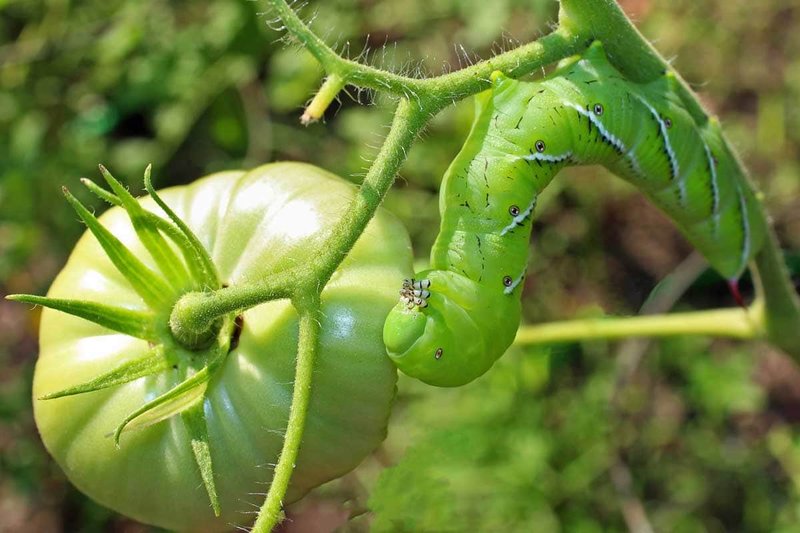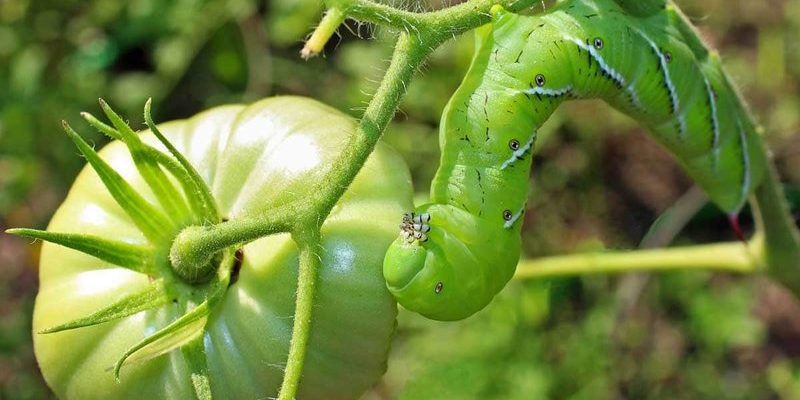
Picture this: you’re out in your garden, savoring the smell of fresh tomatoes and enjoying the sunlight. Suddenly, you notice some leaves are chewed up. Uh-oh. Hornworms are large caterpillars that love munching on the tender leaves of tomato plants. Understanding what draws them in can help you protect your precious crops and keep your garden thriving. So, let’s break down the reasons hornworms find your tomato plants so irresistible.
Why Do Hornworms Love Tomatoes?
Hornworms, specifically the larvae of the tobacco hornworm and the tomato hornworm, have developed quite the taste for tomatoes. But what makes those plants so appealing? The answer lies in several factors.
First, it’s all about foliage abundance. Tomato plants offer a feast of soft, nutritious leaves that hornworms find hard to resist. In a garden bursting with tomatoes, hornworms see a buffet, and they’re more than eager to chow down. The more lush and healthy your tomato plants appear, the more likely hornworms will be drawn to them.
Second, the scent of your tomato plants can attract hornworms. Tomato plants produce specific chemicals in their leaves that signal a potential food source. These chemicals, coupled with the abundance of foliage, effectively send out a “welcome mat” to hornworms. So, if your tomato plants are flourishing, you might want to keep a closer watch on them!
The Life Cycle of Hornworms
Understanding the life cycle of hornworms can also shed light on their attraction to tomato plants. These pests typically go through several stages: egg, larva (the hornworm stage), pupa, and adult moth.
Let’s start with the egg stage. Adult moths lay eggs on the undersides of tomato leaves, often in clusters. Once the eggs hatch, the larva (the hornworms) emerge and begin to eat. This is when the real destruction starts.
As hornworms grow, they can become quite large—up to 4 inches long! During this time, their appetite increases significantly, leading them to munch on leaves voraciously. After a couple of weeks, they’ll find a safe spot to pupate. If you’re not vigilant, you might not catch them in time, and the damage can escalate quickly.
Environmental Factors That Attract Hornworms
The environment plays a significant role in attracting hornworms to your tomato plants. One key factor is temperature. Hornworms thrive in warm weather, so if you’re gardening during the warmer seasons, be prepared.
Another important consideration is moisture levels. Tomatoes prefer slightly moist soil, and so do hornworms. If you’re watering your garden regularly, you might be creating a paradise for these pests. A humid environment can also signal the perfect breeding ground for the adult moths that lay the eggs.
While it’s essential to keep your plants healthy, it’s equally crucial to find a balance that doesn’t entice hornworms to settle in for a feast.
Companion Plants: Friends or Foes?
You might be wondering if certain plants can help repel hornworms. The answer isn’t completely straightforward, but companion planting can sometimes deter pests. Some gardeners swear by planting herbs like basil or dill near tomatoes. These plants can attract beneficial insects that prey on hornworms, essentially turning your tomato garden into a protective fortress.
However, it’s important to note that not every companion plant works for every gardener or garden location. It might take a bit of experimentation to find the right mix. But the general idea is to create a biodiversity that makes it harder for pests like hornworms to thrive.
Signs of Hornworm Infestation
So, how do you know if hornworms are lurking around your tomato plants? One of the first signs is chewed leaves. If you notice large bites taken out of your plants, pay close attention. Another clue is droppings. Hornworms leave behind dark green or black droppings that can be found beneath infested plants.
A more alarming sign is the worms themselves. They’re usually green, which helps them blend in with the foliage, but you might spot them munching away if you look closely. Honestly, it’s a good idea to do a visual inspection of your plants every few days during peak growing season. This way, you can catch an infestation early before it wreaks havoc.
How to Manage Hornworm Infestations
If you do find hornworms on your plants, don’t panic. There are several ways to manage them. One effective method is to simply handpick them off your plants. Yes, it’s a bit gross, but if you stay vigilant, you can prevent more damage.
Another option is to use beneficial insects like wasps that naturally prey on hornworms. Ladybugs and lacewings can also help keep your garden pest-free. If the infestation is severe, consider organic insecticidal soaps or neem oil as treatments, but always follow the instructions carefully.
Remember, the key is to act quickly. The sooner you address the issue, the less damage your beloved tomato plants will endure.
Hornworms are a challenge for any tomato grower, but understanding what attracts these pests is half the battle. From their appetite for lush foliage to the environmental factors that encourage their presence, being aware helps you take preventive steps.
By keeping an eye on your plants, using companion planting techniques, and knowing how to manage infestations, you can keep your tomato garden thriving. So, as you savor those ripe tomatoes this season, remember that a little vigilance goes a long way in warding off those pesky hornworms. Happy gardening!

